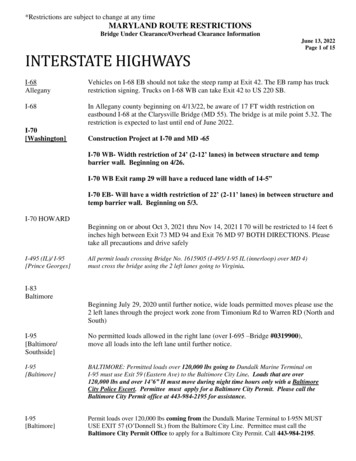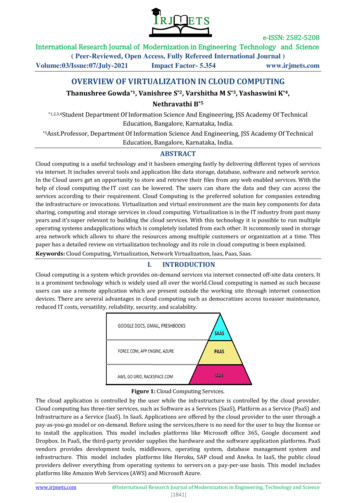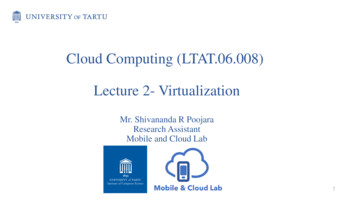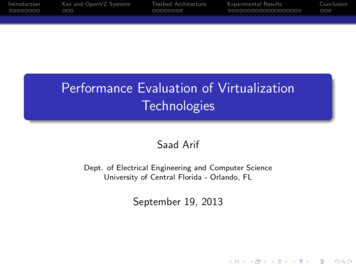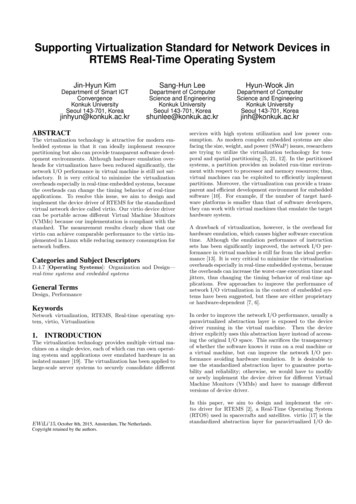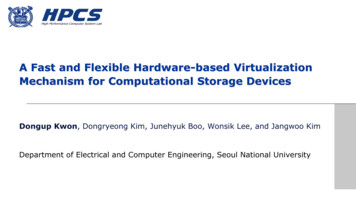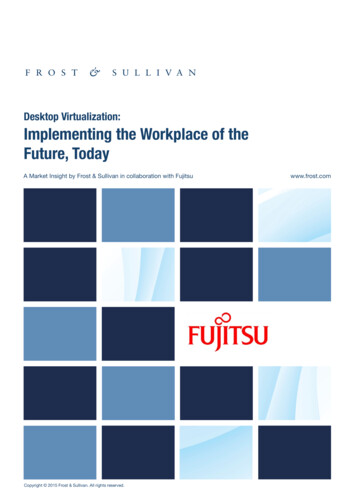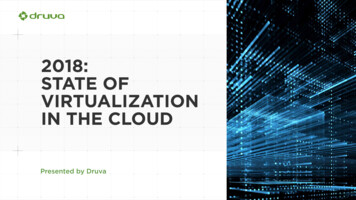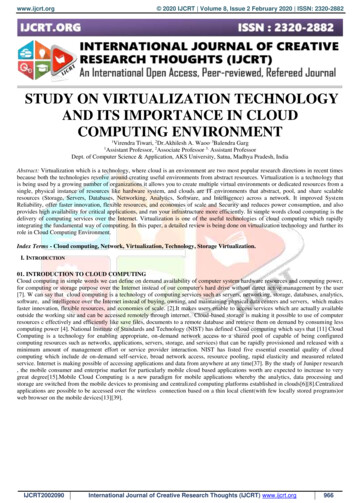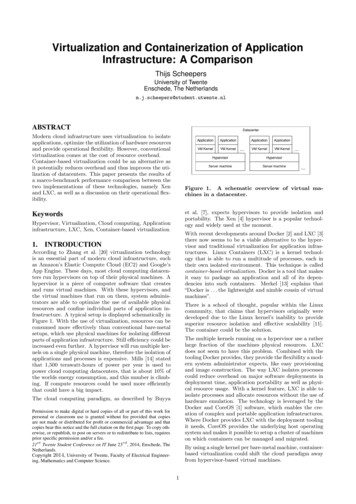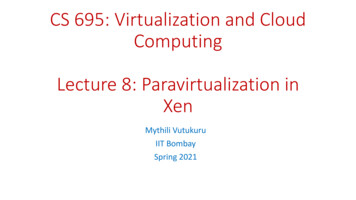
Transcription
CS 695: Virtualization and CloudComputingLecture 8: Paravirtualization inXenMythili VutukuruIIT BombaySpring 2021
Xen and Paravirtualization Xen: most popular example of paravirtualized VMM Paravirtualization: modify guest OS to be amenable to virtualization XenoLinux is a modified Linux OS that runs on Xen hypervisor Application interface need not change Benefits: better performance than binary translation Disadvantages: requires source code changes to OS, porting effort 1-2% code changes reported in the original Xen paper“Xen and the Art of Virtualization”, Paul Barham, Boris Dragovic, Keir Fraser, Steven Hand, Tim Harris, Alex Ho, RolfNeugebauer, Ian Pratt, Andrew Warfield
Xen Architecture Type 1 hypervisor: runs directly overhardware Trap-and-emulate architecture Xen runs in ring 0, guest OS in ring 1 Xen sits in the top 64MB of address spaceof guests Guest OS traps to Xen to perform privilegedactions A guest VM is called a domain Special domain called dom0 runscontrol/management software
CPU virtualization in Xen Guest OS code modified to not invoke any privileged instruction Any privileged operation traps to Xen in ring 0 Hypercalls: guest OS voluntarily invokes Xen to perform privileged ops Much like system calls from user process to kernel Synchronous: guest pauses while Xen services the hypercall Asynchronous event mechanism: communication from Xen to domain Much like interrupts from hardware to kernel Used to deliver hardware interrupts and other notifications to domain Domain registers event handler callback functions
Trap handling in Xen When trap/interrupt occurs, Xen copies the trap frame onto the guestOS kernel stack, invokes guest interrupt handler Guest registers an interrupt descriptor table with Xen to handle traps Interrupt handlers validated by Xen (check that no privileged segmentsloaded) Guest trap handlers work off information on kernel stack, nomodifications needed to guest OS code Except page fault handler, which needs to read CR2 register to find faultingaddress (privileged operation) Page fault handler modified to read faulting address from kernel stack(address placed on stack by Xen) What if interrupt handler still invokes privileged operations? Traps to Xen again and Xen detects this “double fault” (trap followed byanother trap from interrupt handler code) and terminates misbehaving guest
Memory virtualization in Xen One copy of combined GVA HPA page table maintained by guest OS CR3 points to this page table Like shadow page tables, but in guest memory, not in VMM Guest is given read-only access to guest “RAM” mappings (GPA HPA) Using this, guest can construct combined GVA GPA mapping Guest page table is in guest memory, but validated by Xen Guest marks its page table pages as read-only, cannot modifyWhen guest needs to update, it makes a hypercall to Xen to update page tableXen validates updates (is guest accessing its slice of RAM?) and applies themBatched updates for better performance Segment descriptor tables are also maintained similarly Read-only copy in guest memory, updates validated and applied by Xen Segments truncated to exclude top 64MB occupied by Xen
I/O virtualization in Xen Shared memory “rings” betweenguest domain and Xen/domain0 Front-end device driver in guest domainand backend in dom0 I/O requests placed in shared queue byguest domain Request handled by Xen/domain0,responses placed in ring Descriptors in queue: pointers torequest data (DMA buffers with data forwrites, empty DMA buffers for reads,etc.) Similar design to virtio No copying of request data Memory pages swapped betweendomains to exchangerequests/responses Batching for high performance
Summary Xen: paravirtualization based hypervisor Guest OS modified to suit virtualization Trap-and-emulate via VMM Guest in ring 1, VMM in ring 0 Guest traps to VMM for privileged operations Combined GVA HPA page tables in guest memory Read-only copy in guest Updated via hypercalls to Xen I/O via shared rings between guest and Xen/domain0
1-2% code changes reported in the original Xen paper "Xen and the Art of Virtualization", Paul Barham, Boris Dragovic, Keir Fraser, Steven Hand, Tim Harris, Alex Ho, Rolf . I/O virtualization in Xen Shared memory "rings" between guest domain and Xen/domain0 Front-end device driver in guest domain
